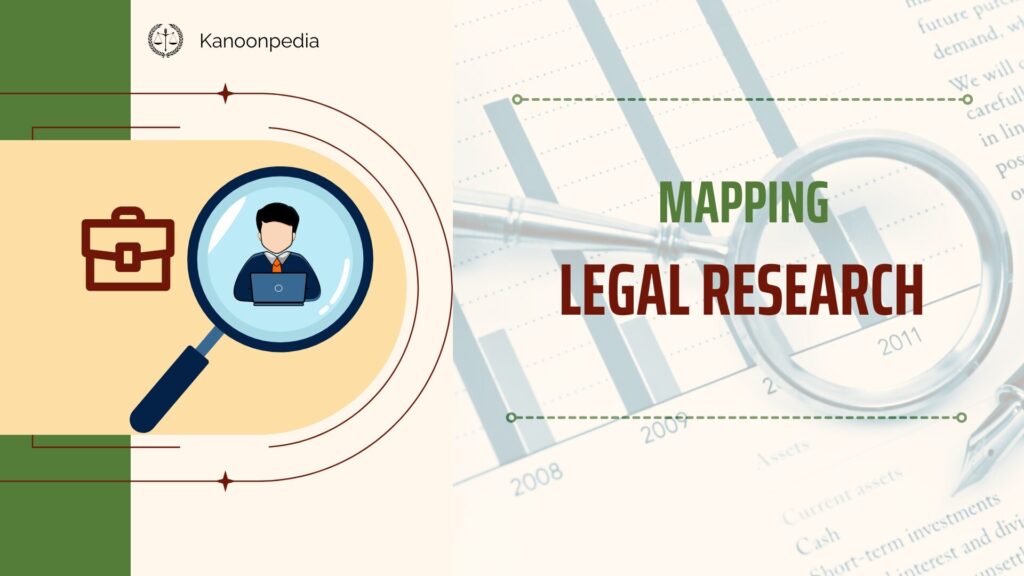In today’s rapidly changing academic environment, Mapping Legal Research has become essential for scholars, administrators, and policymakers. As law schools balance tradition with innovation, the process of mapping legal research reveals how legal scholarship intersects with practice, the humanities, and the social sciences. This blog delves into the origins, methodologies, institutional structures, and future trajectories of legal research, providing a comprehensive guide to Mapping Legal Research for academics and students alike.

Table of Contents
Why Mapping Legal Research Matters
Legal research is no longer confined to doctrinal analysis of statutes and case law. The rise of empirical methods, critical theory, and interdisciplinary collaboration necessitates a clear framework for understanding where and how legal research occurs. Mapping Legal Research:
- Illuminates the diverse methodologies—practical, humanistic, and social‐scientific approaches—used by scholars.
- Helps universities position law schools within broader faculty structures.
- Guides funding agencies in classifying and supporting research.
- Assists individual academics in aligning their work with institutional and disciplinary expectations.
The Three Pillars of Mapping Legal Research
Central to Mapping Legal Research is a conceptual framework distinguishing three ideal types of legal scholarship:
- Law as a Practical Discipline
Research aimed at practitioners—drafting contracts, interpreting judicial reasoning, and refining legal doctrine. Scholars in this tradition emphasize value‐free analysis of rules to serve the justice system. - Law as Humanities
Interpretative studies exploring legal texts, history, philosophy, and theory. This tradition treats law as part of the broader humanistic endeavor, focusing on language, ideas, and the textual past. - Law as Social Sciences
Empirical, quantitative, and interdisciplinary approaches that analyze the law’s social, political, and economic effects. Law and economics, socio‐legal studies, and behavioral analyses all fall under this category.
Mapping Legal Research in University Structures
Universities house law schools in diverse configurations—some as standalone faculties, others within social science or humanities divisions, and a few affiliated with business schools. Comprehensive surveys of 99 UK institutions show that roughly one‐third treat law as sui generis or within combined humanities‐social science faculties, while others integrate law with business or stand alone under the main university umbrella. This variation underscores the importance of Mapping Legal Research to reveal structural influences on scholarship.
Funding bodies further shape these boundaries. In the UK, the Arts & Humanities Research Council (AHRC) funds doctrinal and historical work, whereas the Economic & Social Research Council (ESRC) supports socio‐legal and empirical projects. By Mapping Legal Research, scholars can strategically align grant proposals with the appropriate council and enhance interdisciplinary collaboration across faculty lines.
Mapping Legal Research and Individual Methodologies
At the micro level, legal academics often blend methodologies. Empirical studies by Fiona Cownie, Robert Ellickson, and Hervé Tijssen reveal:
- Roughly half of UK law professors identify as doctrinalists, with the remainder embracing socio‐legal, critical, or empirical approaches.
- US law reviews maintain a stable ratio of doctrinal to law‐and‐economics articles, despite periodic surges in critical scholarship.
- Dutch PhD theses frequently justify their methodological choices in a more rigorous manner when adopting interdisciplinary or empirical designs.
Ternary plots offer a powerful visualization for Mapping Legal Research at the individual level. Scholars’ affinities to the three pillars can be plotted on a triangle, illustrating pure and mixed methodological profiles. Most contemporary UK researchers occupy the central region of such plots, reflecting balanced engagement with practical, humanistic, and social‐scientific perspectives.
Comparative Perspectives: UK, US, and Germany
Mapping Legal Research across jurisdictions highlights divergent trajectories:
- United Kingdom: Originating as a practical discipline, shifted toward humanities in the 19th century, and embraced social sciences since the 1960s. Today’s UK legal scholarship occupies a pluralistic middle ground.
- United States: Began similarly, but the 20th century saw legal realism, law‐and‐economics, and empirical legal studies cement the social‐scientific paradigm. US law schools encourage interdisciplinary degrees, fueling this shift.
- Germany: Rooted in the reception of Roman law and scholarly tradition, legal research remains anchored between doctrinal rigor and humanistic exegesis. Social‐scientific methods have only marginal impact.
By Mapping Legal Research internationally, scholars can anticipate cross‐border influences, adopt best practices, and maintain methodological diversity.
Practical Implications for Legal Academics
- Career Strategy
Understanding where your research lies on the Mapping Legal Research spectrum helps in selecting collaborations, conferences, and publication venues. - Grant Applications
Align your project’s core methodology—practical, humanities, or social science—with the relevant funding agency. Demonstrating awareness of the Mapping Legal Research framework can strengthen proposals. - Curriculum Development
Law schools can design courses that reflect the three pillars, ensuring graduates are adept at doctrinal analysis, critical interpretation, and empirical methods. - Interdisciplinary Collaboration
Use Mapping Legal Research as a conversation starter with historians, economists, sociologists, and philosophers to develop joint projects that push methodological boundaries.
Frequently Asked Questions
Q1: What is “ternary plotting” in legal research?
A ternary plot visualizes the balance between law as practice, humanities, and social sciences by plotting scholars’ affinities on a triangular diagram where each corner represents 100% commitment to one type.
Q2: How can I align my research with funding councils?
Map your core methodology using the three‐pillar framework. If your work is doctrinal or historical, apply to AHRC; if it’s socio‐legal or empirical, ESRC is more appropriate.
Q3: Can mapping help law schools design better curricula?
Yes. By understanding the distribution of research approaches among faculty, law schools can tailor courses to reflect methodological diversity and emerging trends.
Q4: Is mapping legal research only for UK institutions?
No. While the model originated in the UK, Mapping Legal Research applies internationally, helping scholars and administrators understand jurisdictional differences and institutional structures.
Q5: How often should I update my research profile on the mapping spectrum?
Annually—after completing significant projects—to reflect evolving methodological orientations and ensure alignment with career goals and funding opportunities.
[…] Research Methodology MCQ on (Session 2 reading 2/2) Mathias Siems and Daithi Mac Sithigh, “Mapping Legal Research” 71 Cambridge Law Review (2012) … […]